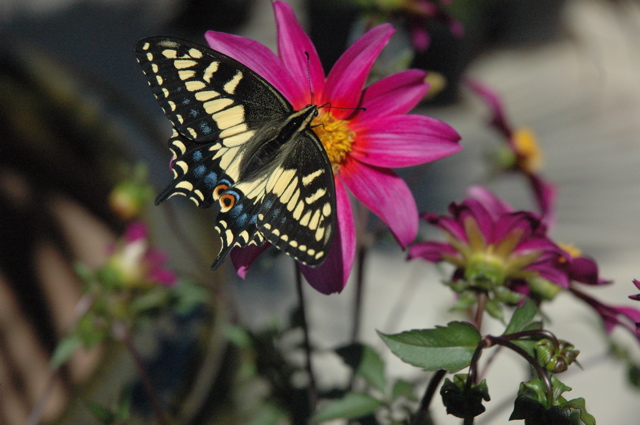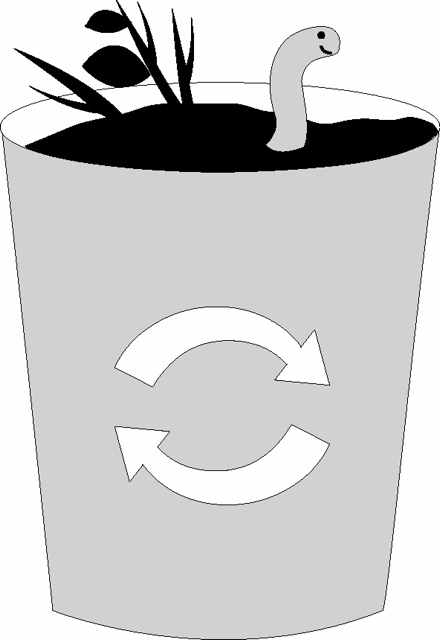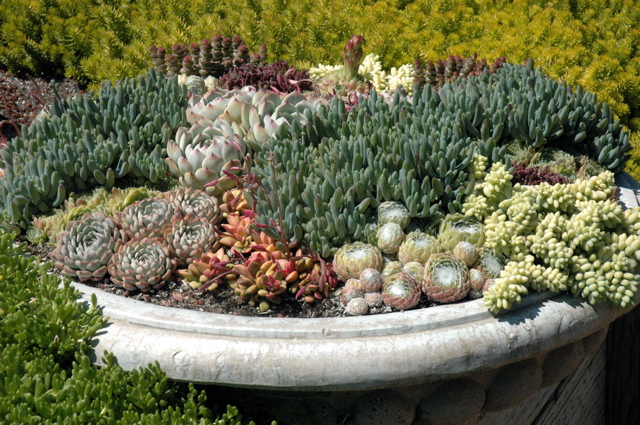
All photos courtesy of Annie Spiegelman
1. As a master gardener, I am slightly obsessed with compost! Why? Because it's filled with our pals, the earthworms and a plethora of microorganisms who go around 24/7 decomposing leaves, grass clippings, old plants and other organic material. This naturally occurring decayed material becomes compost -- free lunch for our plants! I don't buy fertilizers for my plants. I feed my entire yard with a layer of compost a few times a year. You can have a compost pile in your backyard if you have space, or a worm bin in a garage or laundry room in an apartment; or you can buy bags of compost at your local garden center.
For more affordable compost, check with your town's recycling center or local waste disposal service. More and more towns are creating compost from yard waste and food scraps and selling it inexpensively to residents. This helps keep trash out of our overcrowded landfills, which are emitting methane, another green house gas, which the EPA says is 30 times more potent than Carbon Dioxide. Ouch!
2. Learn how to make cuttings and divide plants of your own. Spring and fall are the best time to do this. Many gardening books explain how to do cut and divide. With cuttings you have to be pretty patient because they take weeks to grow new roots but when you divide a plant in the ground, it basically means you just chop it in half with your shovel and move half to another hole to grow. Easy-peasy, free plants! Check with your local nursery if they're giving a class in plant propagation or contact your local Master Gardeners. (Go to the American Horticultural Society and enter your zip code to find a Master Gardening office in your area: www.AHS.org.)
Master Gardeners are geeks, like yours truly, who volunteer in their community helping out home gardeners become more ecologically aware. Master Gardeners are obsessed with plants and worship the worms, and want to date the soil microbes. Okay, maybe not the last part. (Unless they're really hot and have a paying job ... )
3. Back to compost for a minute. If you're adding compost consistently in your yard, your plants will be happier and healthier so you'll be attracting less disease and pests to your yard. You'll then have less need to purchase pesticides. Our creeks, streams and oceans are polluted with chemical fertilizers and toxic pesticides because they leach into the subsoil from our overuse of them. Let's get off the sauce! We all need to become 'greener' home gardeners so the next generation has clean land and water, and won't say how clueless their parents were. (Yes, I have teenager.) If you ever do need to purchase a pesticide, go to www.ourwaterourworld.org to find the least toxic product for you plant problem.

Wormy drawing courtesy of Anne Hoglund
4. Mulch, mulch, mulch! If you live in an area which experiences drought, as I do here in sunny California, you want mulch! Mulching your entire yard helps keep your plants cool in the summer and makes a winter blanket to keep them warm in the winter. Once a year, add a 2-3 inch layer of mulch to your yard. This will also help retain water. Our water rates are increasing here in California because of the fourth year of drought (Oy!) so this is a fantastic way to help the earth and your checkbook. Call your local arborist and ask them to dump off some wood chips for you from a tree they may have just removed in your town. Most will do this for free. Ask what kind of shape the tree was in. If it was seriously ill you don't want it but if it was just removed because of other issues, say yes and thank you!
Some mulch choices: wood chips, leaves, straw, shredded bark, sawdust, pine needles, grass clippings.
House Plants
5. Repotting house plants will keep them healthy for a long time instead of them dying on you and having to buy a new one. (Yes, I have been there!) Houseplants need to be repotted every year or two, in the spring, into a pot about 1-2 inches wider. (Look at the bottom of the container. If you see roots growing from the hole or roots growing on the topsoil, it's time to repot.)
Take the whole plant outside to do this or place in a sink or on a table with newspaper. You'll want to add fresh potting mix especially to the bottom where the roots will flourish in their new clean home. When repotting, add a handful of compost or an organic (will work slowly and naturally) fertilizer and water well.
6. Don't waste your money fertilizing houseplants in the winter! I know we've all been brainwashed by advertising to fertilize plants every two weeks but soil scientists I interviewed say to stop the madness! In the winter, lower light levels and temperatures slow down the plant's growth and let the plant take a winter nap. Start up again during active growth, in the spring and summer with a regular dose of a liquid organic fertilizer such as fish emulsion.

7. Consider succulents! If you are one of those people who kill all houseplants, succulents may be your new best friends. We all think of a boring ol' cactus when we think 'succulents' but today there are many gorgeous varieties to choose from. These tough and dry plants just need a sunny window, a tiny bit of water (when you remember) and they will perform for you without any whining. Yay! There are 2000 species of cacti and many will do fine indoors. And to top it off, most are virtually pest-free. Check with your local nursery for which succulents thrive in your climate zone and can handle being stuck indoors all day.
Want to know more about cherishing your soil? Come nerd it up! Pick up a copy of my new book (yes, this is shameless self-promotion) "TALKING DIRT: The Dirt Diva's Down-to-Earth Guide to Organic Gardening," Annie Spiegelman (Penguin Group, 2010)